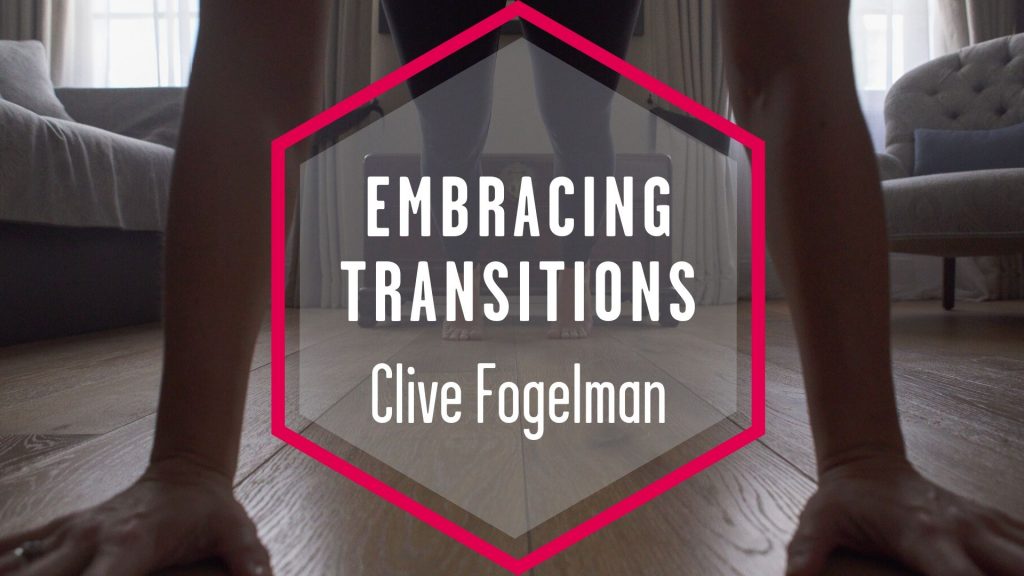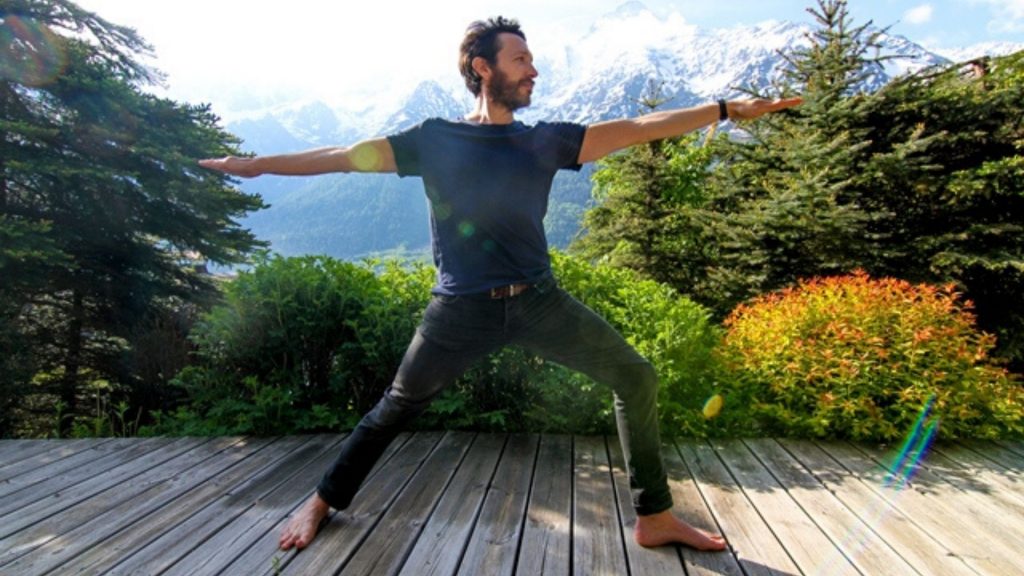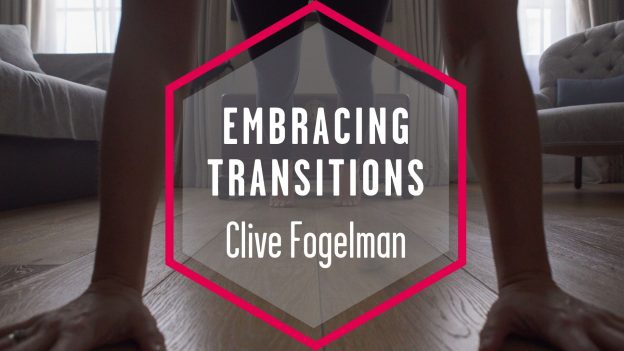
Have you thought about the role transitions play in your life? We move through transitions daily. MFML teacher, Clive Fogelman suggests ways to embrace times of uncertainty
During our lives, we might encounter a range of bigger transitions such as changing jobs, entering a new stage of life, moving and illness. But there are also more subtle transitions such as shifting from work to relaxation, the beginning and end of the weekend and returning from a holiday. Transitions, even exciting ones, can be daunting. They are filled with uncertainty and without always being conscious of it; we sometimes avoid them and what comes up for us for during them.
9 Ways to Navigate Transitions and Change
Transitions in yoga
In yoga, we also encounter transitions, for example between time on our mat and the day as a whole; the period at the beginning of the practice before we start moving, and the period of rest at the end. With a home practice it can be especially tempting to cut out these parts. We might feel restless or find it difficult to stop and feel an urgency to move on. There are also the transitions during our practice. One example is how we get from one posture to another and how we move during our flow. Again during those times we might witness a tendency to rush through and to want to get into the posture as quickly as possible. We might feel a resistance to slowing down, exploring the space in between postures as well as holding the postures themselves.
The Challenge of Transitional Space
There may be several reasons we are uncomfortable with the transitional space in life and in our yoga practise. We may have become so used to having a direction and targets that it feels unfamiliar just to be and let the experience unfold more gradually. The transitional space can sometimes feel endless and we might feel anxious about being feeling lost and directionless. During transitions we often have time for more reflection but perhaps feelings and thoughts might appear that challenge assumptions we have of ourselves, how we live and relate, and in yoga how we are approaching our practise and what we really want from it.
Pause and rest to connect
To manage the the transitional space we often set ourselves goals. Goals can provide a sense of control in the face of the unknown. Everything can then be evaluated and defined in terms of outcome and achievement. In our yoga practice, we might start targeting postures and become fixated on being able to do a certain posture in a certain way. As a result however, we might be less connected to what is actually happening in our body. We might not be aware for example, that we are overusing or underusing certain parts of our body or that a part of the body is starting to feel strain.
That’s why taking rest poses during our practise can be so important. Not just to rest, but to pause and take a moment to more fully connect with how we are feeling and how we might want to approach our practise. Something I often ask myself in the transitional space during practise is, “how can my practise meet me where I am right now?” We can ask the same in day to day life when we take a moment to slow down and pause – “how can life meet me where I am right now?”
Less attachment, more curiosity
When we become less attached outcomes, we can start to fully embrace the journey both in life and with yoga. Our whole experience starts to open out. Take the example of walking around day to day. Often, we are so focused on our destination (getting from a to b) that we remain unaware of what is happening around us. We might not notice the subtle shifts of seasons, the changing colours and smells and others changes to the environment. We might not notice someone who needs our help.
One thing I find helpful is to vary my walking routes. Rather than take the same route that tends to keep me on autopilot, I find consciously choosing a route that is guided by how I am feeling keeps me more connected and present in the experience of moving to my destination. I start to move slower and I become more curious. And that for me is really a key feature to transitions; that sense of being curious, open to enquiry and receiving what emerges in that space.
Using Transitions to establish deeper self-awareness
Similarly in yoga, I mix up my transitions and explore different ways to move in an out of postures. I used to be overly attached to the idea of doing chaturanga or focusing on the key poses that we transition through like plank and downward dog. Of course it’s important giving these postures and movements attention but there are a whole range of other subtle movements during a vinyasa transition that we can also bring attention to.
For example, the process of stepping back to plank can be just as significant as being in plank. It can provide a great opportunity to experiment with how we want to move into a pose. It is a movement we can potentially do quite softly and effortlessly or we can make it more challenging and create deep engagement by keeping our shoulders above our wrists, slowing down the pace at which we step our feet back and focusing on lightness. Suddenly, by shifting the focusing to the transition a whole range of opportunities appear and the potential to develop different strands to our practice.
Tuning into the subtle messages
I am not suggesting there is anything wrong with wanting to accomplish a certain posture or moment. As with life, dreams, aspirations and intentions are valuable. However, fixed targets can sustain us forever in pursuit. Constantly striving towards goals becomes relentless and exhausting and sometimes we lose sight of why we are doing what we are doing.
In life, many injuries and illnesses are often identified later than they could be because we are moving so fast and not stopping and taking time to listen to our bodies. We don’t notice we are tired until we feel burnt out. We don’t notice the beginning of feeling unwell until an illness emerges. It is the same in yoga when we rush into postures or try to force it. We do not give the body time to adapt and consolidate. We can become so obsessed with the final outcome and getting there as soon as possible that we are unable to hear the subtle messages along the way.
These messages might communicate that we need to pull back, make a slight adjustment or in some cases find an alternative posture. While sometimes we might get more from going deeper, just as often we can get more from integrating effortlessness and softness. Where we situate ourselves on that spectrum might vary from day to day and practice to practice. But by taking our time and focusing less on the outcome we might start to notice with more clarity what we need and when.
Developing our inner compass
Engaging in transitions sometimes involves becoming more at ease with not always having a clear direction or specific goals. The idea of giving ourselves permission can be supportive here. It’s okay not to be clear about where we are heading and to not have all the answers. When we are not continually in pursuit of something it can often create space for other things to emerge. The fear might be that if we slow down we will lose time and we won’t get to where we want to be. However, it can be quite the opposite.
Slowing down can give us the gift of time. Sometimes it can lead us to places we couldn’t have even imagined or knew existed. When we are in transition, we can feel fragile, exposed and vulnerable. But it is then that we potentially discover who we really are and what we really need. Rather than focusing on our external direction, we learn to harness our internal compass and can learn to live more fluidly in the face of an external environment which is constantly changing.

Managing Transitions
One way I manage the transitional space is to really focus on my connection to the earth and my environment. I try to focus more on my sensory experience like sights, sounds and smells. I might spend more time walking in nature. Connecting to my breath helps me to slow down and sustain me in stillness.
At the beginning and end of my yoga practice, as well as various moments through the day, I close my eyes, sometimes with my hands over my heart. When I do this, it tends to bring me closer to my felt experience – the feeling of being in my body in that particular moment. This might be a break in between activities, pausing for a few moments when I get home or sitting for a few moments when I wake up. I try to notice how I am feeling; whether I am thirsty/ hungry, tense/ relaxed, sad/ happy, low/high energy, needing space or wanting connection. Usually it’s a mix of various things! It is also an opportunity to create clarity about things I am doing, my priorities and how I want to focus my energies moving forward.
Embracing Transitions
Embracing the transitional space is really about embracing ourselves and all that is around us more fully. In transition, we can potentially cultivate a closer relationship to ourselves, to others and our world. It is an opportunity to be more present, connected and compassionate and to live more consciously and with more authenticity.
Try this Vinyasa Transitions class with Clive to embrace mindful transitions


Clive Fogelman is a London based yoga and meditation teacher with a background in learning and development as well as psychotherapeutic work and sports coaching. Clive focuses on supporting people to cultivate intuition in their own bodies and develop greater self-awareness.





Leave a Reply